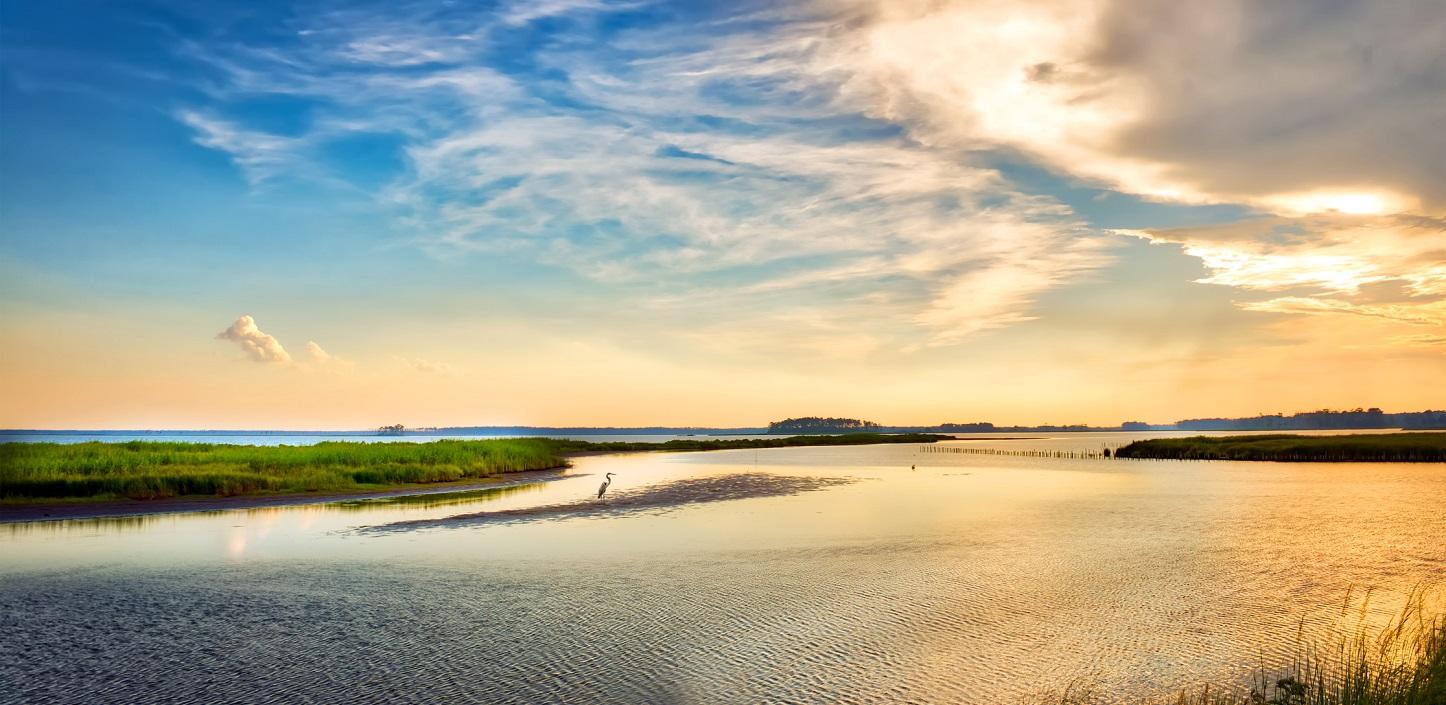
Chesapeake Bay Watershed to Benefit from $35 Million in Watershed Restoration Grants
Historic investment in grants to support on-the-ground clean water, climate resilience and community engagement projects
WASHINGTON, D.C. (March 27, 2024) – The National Fish and Wildlife Foundation (NFWF) today announced $35 million in grant awards to support the restoration and conservation of the Chesapeake Bay watershed. The 82 grants will leverage $32 million in matching contributions to generate a total conservation impact of $67 million, marking a record annual investment in NFWF’s nearly 25-year history of supporting Bay restoration.
The grants were awarded through the Innovative Nutrient and Sediment Reduction Grant (INSR) and the Small Watershed Grants (SWG) programs, core grant programs of the federal-state Chesapeake Bay Program partnership that are administered under NFWF’s Chesapeake Bay Stewardship Fund (CBSF). CBSF is a partnership between NFWF, EPA, and other federal and private funders that provides grant funding, technical assistance, networking and information sharing in support of local, on-the-ground conservation and restoration efforts to restore the Chesapeake Bay and its tributary rivers and streams.
“With 2024 marking 25 years of partnership between NFWF and the U.S. Environmental Protection Agency in advancing efforts to protect and restore the Chesapeake Bay watershed, we’re thrilled to celebrate this programmatic milestone with a record annual investment of $35 million in voluntary and community-based projects across the Bay watershed,” said Jeff Trandahl, executive director and CEO of NFWF.
“These grants reflect our continuing commitment to protect the Chesapeake Bay and preserve our nation’s environmental legacy for future generations,” said EPA Mid-Atlantic Regional Administrator Adam Ortiz. “This historic investment by the Biden-Harris Administration enables EPA to continue to provide game-changing funding for our partners who are equally committed to preserving, protecting and enhancing the communities, people and businesses who rely on the Bay.”
Through these awards, NFWF and EPA have prioritized investments that accelerate implementation of natural and nature-based watershed restoration practices that provide long-term water quality improvement benefits, increase aquatic and terrestrial habitat for at-risk species, and enhance climate resilience for human and wildlife communities.
These projects will further emphasize partnerships and collaborative approaches as central to effective local and regional ecosystem restoration efforts and engagement of communities in the planning, design and implementation of those efforts. The funds will help partners engage farmers and agricultural producers, community-based organizations, homeowners, churches, businesses and municipalities to improve local water quality and the health of the Chesapeake Bay.
Examples of this year’s grant recipients include:
- Arlington County, Virginia ($282,400) will install three green stormwater infrastructure practices to intercept more than four acres of upland stormwater runoff to improve Grandma’s Creek and conduct a variety of nature-based and watershed education activities in the community to generate awareness and watershed protection in the North Barcroft community.
- Colonial Soil and Water Conservation District ($999,500) will install approximately 5,200 linear feet of living shorelines on agricultural properties along the James River in Charles City County to improve shoreline stabilization, and prevent water quality degradation in the Chesapeake Bay and property loss.
- Western Pennsylvania Conservancy ($1,000,000) will accelerate restoration of riparian forest buffers, urban and community forestry programs, and community and local government engagement across central Pennsylvania—installing 75 acres of riparian forest buffers in the Juniata, Potomac and West Branch Susquehanna watersheds and advancing urban tree planting in and around Altoona and Hollidaysburg.
- Chesapeake Bay Foundation ($476,300) will deliver whole-farm conservation systems on farms in Maryland and West Virginia’s Upper Potomac River watershed to enhance water quality and resilient agriculture in the region.
- Lower Shore Land Trust ($1,000,000) will expand the capacity of the Delmarva Restoration and Conservation Network to accelerate restoration and conservation practices in the Chesapeake Bay watershed portion of the Delmarva Peninsula to implement 160 acres of wetland and buffer practices.
A complete list of the 2024 Chesapeake Bay Innovative Nutrient and Sediment Reduction grants recipients is available here.
Since 2006, the INSR Program has provided nearly $150 million to 346 projects that have reduced nearly 25 million pounds of nitrogen, four million pounds of phosphorus, and 500,000 tons of sediment across the Chesapeake Bay watershed. The SWG Program has provided nearly $130 million to more than 560 projects that have permanently protected 180,00 acres under conservation easement, restored more than 1,600 miles of riparian habitat and 14,000 acres of wetlands, and engaged more than 150,000 watershed residents in volunteer conservation and restoration efforts.
For more information about the Chesapeake Bay Stewardship Fund or to download the 2024 Chesapeake Bay Innovative Nutrient and Sediment Reduction and Small Watershed Grants Slates, visit www.nfwf.org/chesapeake.
About the National Fish and Wildlife Foundation
Chartered by Congress in 1984, the National Fish and Wildlife Foundation (NFWF) protects and restores the nation’s fish, wildlife, plants and habitats. Working with federal, corporate, foundation and individual partners, NFWF has funded more than 6,000 organizations and generated a total conservation impact of $8.1 billion. NFWF is an equal opportunity provider. Learn more at nfwf.org.
About the U.S. Environmental Protection Agency Grants
Every year, EPA awards more than $4 billion in funding for grants and other assistance agreements. From small non-profit organizations to large state governments, EPA works to help many visionary organizations achieve their environmental goals. With countless success stories over the years, EPA grants remain a chief tool to protect human health and the environment.
About the Chesapeake Bay Program
The Chesapeake Bay Program is a regional partnership consisting of federal, state and local governments, academic institutions and non-governmental organizations. Primarily funded by the U.S. Environmental Protection Agency, the Chesapeake Bay Program has set the guidance and policy for restoring the Chesapeake Bay since 1983. Learn more at www.chesapeakebay.net.
# # #
Contact:
Rob Blumenthal, 202-857-0166, rob.blumenthal@nfwf.org